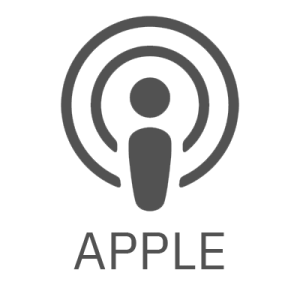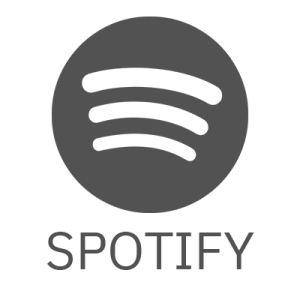What does it take to facilitate meetings people look forward to coming to? In this episode of the Accelerate Your Performance podcast, Dr. Janet Pilcher discusses her approach to designing better meeting agendas and strategies for facilitating meetings that have helped her become a better coach and facilitator. Listen now to learn more about these tips for agendas, including how incorporating questions rather than topics can enhance team and leadership outcomes.
[Intro music plays in the background.]
Janet Pilcher: Hello, everyone! Welcome to today’s Accelerate Your Performance podcast. I’m your host, Janet Pilcher. Thank you for tuning into our show today. This podcast is all about leadership, and I don’t mean leadership as a position. It’s about how we can all see great leadership in action so that we can all be leaders in our organizations.
The focus of leadership is connected to the Nine Principles Framework highlighted in my new book, Hardwiring Excellence in Education.
I’m going to take a few minutes today and just share one of the major things that I learned this summer while I was out in the field, spending time with people like you, people who are in leadership positions, and people that I’ve had an opportunity to partner with over the years. Great leaders out there in education.
As I complete the summer, after spending meaningful time with our leaders in Studer Education, I’m going to share this practice that proved to be beneficial to me and leaders that I serve.
I decided to work on designing better meeting agendas and approaches that would help me be a better coach and facilitator for those that I serve. The biggest change was creating agendas with questions rather than topics.
Really thinking through and doing good pre-work on what would make a good agenda. And so, I decided to really turn the topic areas into a series of questions so that when those questions are shared, the leaders prior to meeting with me can answer those questions.
I’ll start with that tip, and I then continue with other tips that align to this change and taking you through what occurred as I made that one initial change to the meeting agenda. I felt like I’ve provided a better experience and outcomes for the leadership positions I’ve facilitated, so I hope these high-level tips will be helpful to you today and as you go into this year in ways that you might create your own meeting agendas.
So here, let’s start with this. As I mentioned, I created agendas with questions. Questions rather than a laundry list of items or topics. So, it’s kind- it’s thinking of it this way, not this.
The agenda item is not “student achievement on 3rd-grade reading,” and that can be sent in a written update, but it’s this. “What are the data telling us about how well students are achieving on their reading formative benchmark assessments? Where are our positive highlights when we look at that data? Why is this occurring? Where do we see the most significant gaps and why is this occurring?”
Here’s another example. Not this “Employee survey timeline” written on the agenda. OK, again, this can be sent in a written update. But this: “When reviewing the employee survey timeline, what help do you need to execute the actions that you’re responsible for? Give me an example of how you’ll support and encourage employees completing the survey.”
Here’s another example. Not this “board meeting agenda review.” That agenda again can be sent prior to the meeting, but this: “As you review the areas you’re responsible for and presenting to the board, what outcomes are you trying to achieve with your board presentation? What questions do you have? What help do you need?”
Just turning a topic into questions changes the approach to the meeting and it has changed the way we engage with each other and have meaningful conversations.
So, here’s the 2nd Tip with doing that: It’s really important to provide the agenda far enough in advance for all participants to do the pre-work for answering the questions. So, it takes a little bit of more pre-work on our time as a leader to really be thoughtful about how we plan developing meeting, meeting agendas.
Over the course of time and putting that into our work so that we can get the information to others so that they have time to prepare. That will help us have such a productive conversation. We’ll learn a lot with that conversation.
Tip 3: As the meeting facilitator, jot down notes or have someone jot down notes to refer to. I just like to jot down my own high-level notes. I have a little pad that I just scribble on that probably only I can read in terms of my writing, but it’s my way to really kind of process and put things in my mind in ways that I can remember so that I can come back to them.
Tip 4: We’ve talked about this before. Welcome people and start on a positive note. Be welcoming. Be energetic about the meeting at hand. Excited about it. Always start on a positive note.
Tip 5: Provide a structure with recommended times and let the outcomes of the discussions help you manage how to best spend time in the meeting. Treat the meeting as a place where people are sharing insights, getting ideas, learning from each other. All of which moves to making consistent decisions on how to execute a plan of action or approach.
So, we have recommended times with the structure. And it’s important for us to manage that time and also not allow that time to get in the way of rich discussion or deviating in places where we need to. If there’s more time that needs to be spent in an area in order to get to an outcome, that’s important. It’s our ability as that facilitator and leader to manage to that.
And with that said, here’s the next tip.
Tip 6: Is to, we also have to monitor the discussion aligned to the questions on the agenda to ensure that the discussion is indeed aligned to the outcomes we’re trying to accomplish. So, there’s flexibility, but we still have the structure that keeps us focused on our task at hand, and it’s the balance between the- building enough flexibility but having enough structure to where we’re getting to the right outcome.
Tip 7: Continuously summarize what you hear and ask people to check your accuracy. And note where there is agreement. So, as we continue to move through the agenda and we’re asking questions, we’re repeating back what we think we hear and looking at things at a high level and making sure that we’re creating that storyline throughout the course of the- of the meeting time where we’re highlighting those areas that are most significant.
Tip 8: Place an item on the agenda, allowing time for participants to provide any input that may have been missed. I usually do that at the end of the meeting, and again, I want to monitor this input to ensure it stays focused on the outcomes at hand, but usually at the end of the meeting. Or if it’s a longer meeting, I may do it in between the meetings.
And what I’ve learned is- is asking, “Is there anything that’s top of mind that we missed that’s really important to bring to the conversation before we close today?” Really giving people that chance to not leave with something on their mind that they think is important, that should have been brought up, and that we should have talked about or needed to talk about.
Tip 9: Place an item on the agenda that summarizes high-level thoughts, actions, and next steps. As the facilitator and leader of the meeting, I want to summarize these thoughts and actions at a high level and communicate that so that we make sure that our- that our focused areas have full attention and that we have the consistency of thought around those actions.
Tip 10: Follow up within 48 hours with a summary of the meeting to include the key points and action items and next steps. Summarize so that- so that our teams can read through and connect back to the storyline that we’ve created in that meeting.
Tip 11: For follow-up items, have a process for following up. Again, this is a storyline. One meeting is connected to the next meeting.
And that’s what we’re doing as Tip 12: connecting the next meeting to the previous one to make meeting conversations connected and not isolated events. These meetings are indeed creating conversations that create our storylines for the way that we do the work every day that’s most important to what we need to do to accomplish the outcomes at hand.
And I’ll end with the last tip, is thank people for their time.
Thank people not only for their time but their energy and their input and appreciate what they bring to the table as we’re beginning to look at what’s in front of us in ways where we can understand areas that we do well and continue to do those and look at where we need to build improvements and know how to take action from the input to achieve better outcomes.
The last thing I want to mention that I believe is important if you have longer meetings, sometimes you have planning or strategy meetings and they’re intentional that way with the agenda that we set. Let’s plan a social event. Let’s do a dinner together. Let’s have some type of fun activity. If that’s- that’s what’s your preference. It’s something that helps us and our team get to know each other. That part’s really important.
You know, at our conferences, in our annual conference, “What’s Right in Education” that’s coming up in October, we always have a night of fun with each other and our partners by networking with food, drinks, and usually some good music in a nice place that’s relaxed and people have a chance to get to know each other, appreciate each other, laugh with each other and, yes, learn from each other.
So, I hope you can join us on October 24th to 26th at Pensacola Beach, Florida for our “What’s Right in Education” conference. If you- if you want to join us, I hope you will connect to studereducation.com/events. You can register there, and if you have any questions, please reach out to us.
[Outro music plays in the background.]
Now back to meetings. Let’s make one of our goals one where our teams look forward to coming to meetings. Yes, I said that, where our teams look forward to coming to meetings, they see value in engaging in conversations with their team members, and they see meetings as a place where they can learn, have input, be empowered to make good decisions and have a little fun.
Try creating your meeting agendas with questions rather than topics. That’s what this podcast is all about. This episode it’s the tips that connect back to starting by creating agendas with questions rather than topics.
Think you’ll quickly see what needs to be part of a meeting and places where you can simply send information without having a meeting. This change in my approach over the summer is now a practice I’ll hardwire from now on.
Why? Because it’s better. I do a better job. I’m better at my job with creating agendas in this way, and most important, it supports those that I serve to achieve positive outcomes. And that’s my job as I’m serving others in ways that are meaningful to them.
Thank you for tuning in to this episode of Accelerate Your Performance. Please share this episode with a friend or colleague you think today’s episode topic will resonate with, and I look forward to connecting with you next time as we continue to focus on the Nine Principles Framework so that we can be our best at work.
Have a great week, everyone.






